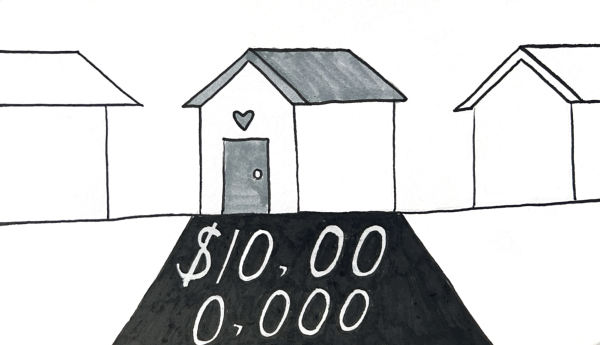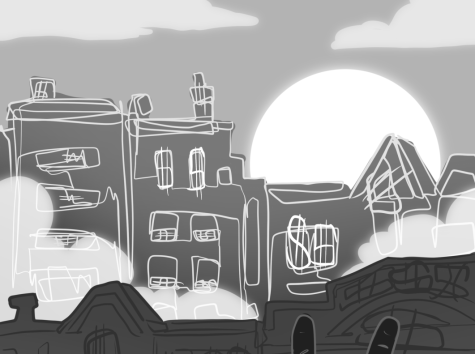The unspoken violence in shelters
May 5, 2022
As of 2022, over half a million people in the United States are unhoused, with 18 per every 10,000 experiencing houselessness every day—even though there are more than 16 million vacant homes. In the state of Washington alone, there are a reported 21,577 people who are not housed. Washington ranks as the state with the fifth-highest houseless population in the country. This is not because people are too lazy to make money or want to live outside, but because the U.S. fails to create affordable, accessible and safe housing.
The only “solution” the country provides for the overwhelming amount of people forced to live outside are shelters, which are often dangerous environments due to a lack of funding and violent stigma around houselessness.
Many people who live outside live with others in camps, often in parks or alongside highways. However, law enforcement and city officials are quick to conduct “sweeps” on encampments, where people are kicked out of their living areas and have their belongings taken, while law enforcement fails to provide alternate options of places to go.
According to Bronwyn Carver, who lived on the streets of Portland, Oregon for six years, “The list of places one is not allowed to be is much longer than the list of places one is allowed to be. You are typically given between 72 hours and 10 days. There is no set time or date indicating when they will come, other than the three days to 10 days timeline,” stated Carver.
People are told that they are not allowed to live outside, and if they don’t have housing they can live in shelters. Basically, if you don’t want your home swept and belongings taken every so often, your only option is a shelter, but most shelters are not safe spaces either and often lack room for those in need.
Many cities have long waitlists for shelters, sometimes consisting of hundreds of people, resulting in a six month or longer wait for a bed. Even if they can enter a shelter, a lot of people feel if they enter they will be pushing another person back onto the streets, so they would rather stay outside.
For those who do sleep in shelters, they are only allowed to stay for a limited amount of time. This is because shelters are very underfunded, resulting in an extreme shortage of space and resources, and due to the large population of unhoused people, they are asked to leave in order to make room for others.
Shelters typically have many restrictive rules that raise the bar for who can enter and stay. These rules include curfews and zero-tolerance policies for drugs and alcohol, preventing any person with an addiction from being housed. Shelters also tend to fail to provide accommodations for those with mental illnesses.
Many shelters, such as those in Oakland, do not welcome people with children, people with pets, or a working person who has a night shift, as their work schedule goes against their curfew. These rules are discriminatory and restrictive; no one should have to meet certain criteria in order to receive basic survival needs.
Sexual and physical abuse in shelters runs rampant because of the lack of funding, healthcare and the competitive atmosphere that shelters foster.
“In the shelter, I was subjected to violence, threats, harassment, discrimination. That is what we feared we would face in the streets, but we still experienced it at the shelter, just with more rules and expired milk,” said Esperanza Fonseca.
Those who live on the streets rather than in shelters have valid reasons for doing so. It is not because they are lazy, crave attention or secretly enjoy the experience of being unhoused. People live outside because they are forced to, and the only option the country offers is dangerous, unwelcoming, temporary and inaccessible.
Shelters are not a solution to the housing crisis and many shelters are not even a safe alternative to living outdoors. Every person deserves safe and secure housing, and we need to prioritize providing it.








Sue p • Jun 26, 2023 at 6:47 am
This is an 2022 column but hopefully I can get some feedback. I’m currently homeless and live in a shelter in , Massachusetts and drug distribution happens around me all the time. Staff I believe actually is a buyer. I’m elderly and have no drug or alcohol abuse. I’m continually attacked with rude comments about my Native American background. Staff won’t allow private conversation as the cameras with voice communication as well and randomly staff will say that they ( the staff] will have to go to jail for there reaction will be bad for you if you talk about them, I guess that means beat you up /Threats to harm you and all private matters to each individual are openly aired spreading names and families to all the homeless. Gossiping about homeless drug history ,It’s crazy. You’re given a chore but then the staff abuses the chore into personal chores of their paycheck waking you up out of sleeping hours. The former shelter I stayed in Brattleboro Vermont was so intense with violence, sexual acts taking place inches away from you bed, overdosing , staff drug usage. So bad, insanity was overkill. I believe recently a member of staff was axed in the Vermont shelter.The homeless shelters are very violent and filled with sex offender,drug distribution and sexual situations. Anyone willing to interview for homeless stories about shelter abuse. There is also favoritism with some staff to homeless wether it’s sex or drugs. Where I stay is a small shelter but sexual acts have been done in the men’s bathroom, open drug usage and payments. A drug dealer actually has a bed and services the entire shelter with drugs. Are you interested bin these stories. Many people sleep outside for safety not all of it is drugs.